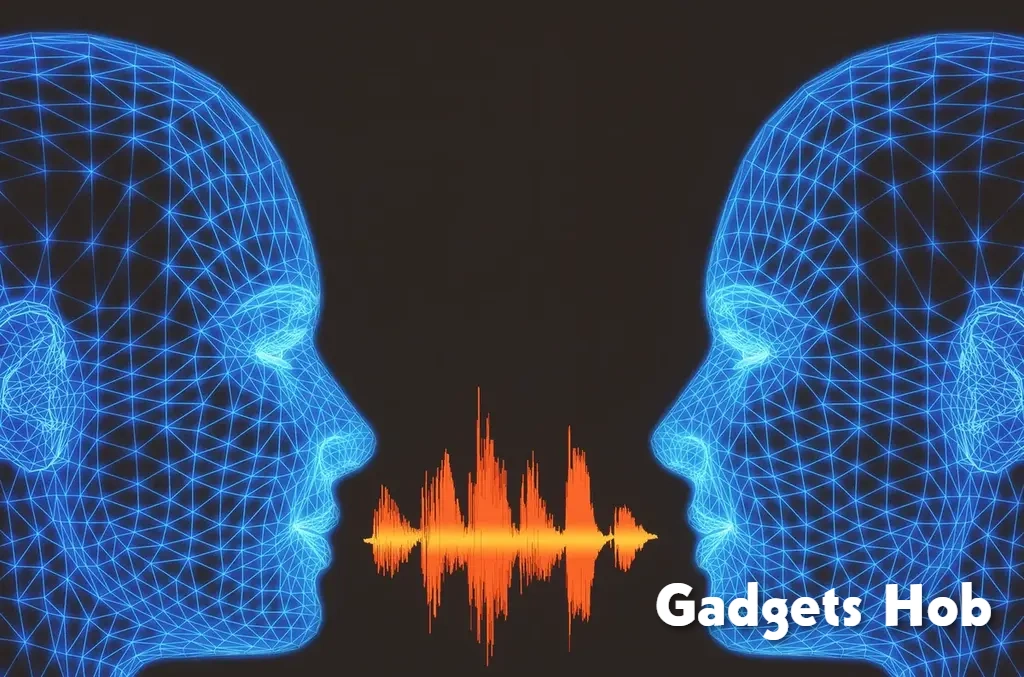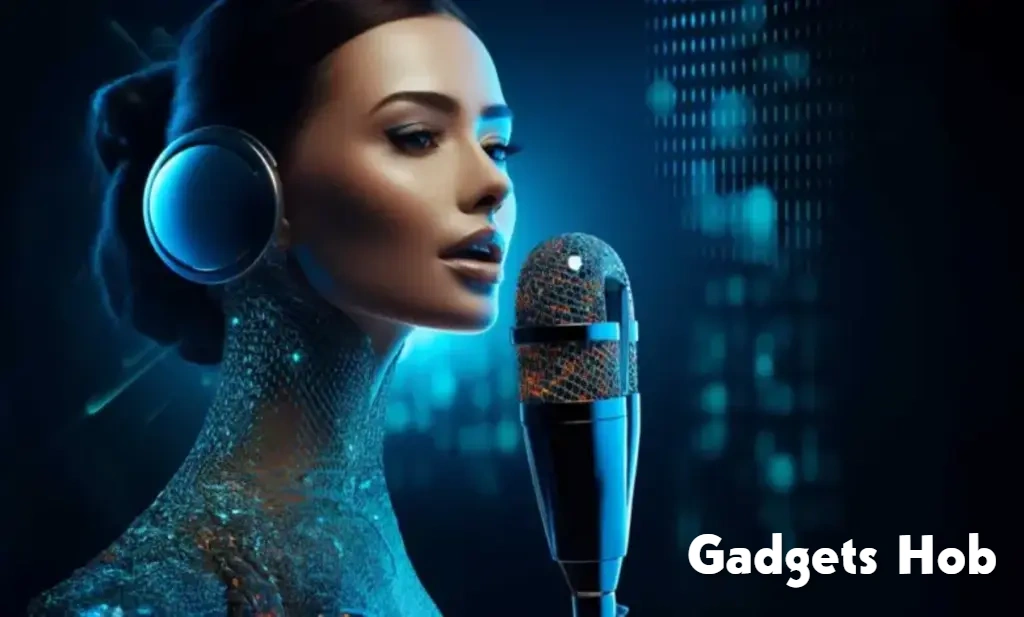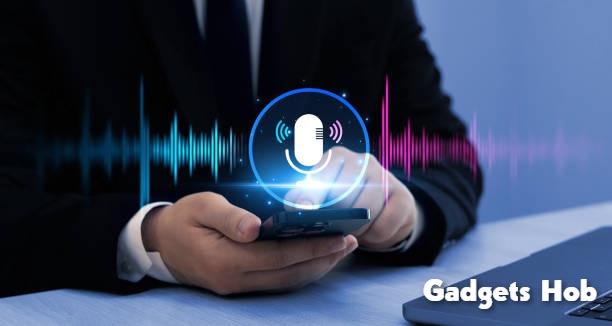What if someone could precisely replicate your voice in a few of minutes using only audio? It is now feasible for computers to accurately mimic human voices thanks to AI-generated voice cloning. Learn about AI voice cloning in this article, along with its uses, drawbacks, and potential abuse of this amazing technology.
What is Artificial Intelligence Voice Cloning?
Voice cloning is the process of employing artificial intelligence to create a duplicate of someone’s voice. It entails evaluating the sound nodes of a given voice and then generating them so uniformly that the cloned voice is nearly indistinguishable from the original.
This method is more than just voice recording; it is about creating a dynamic digital voice that can say anything in the same manner and tone as the sampled voice.
This AI deepfake technology utilizes powerful neural networks and machine learning algorithms. Its first phase is known as voice sampling, in which a large number of audio recordings of the target voice are collected.
After that, this data is processed and examined to determine how to improve the rhythm, tone, inflection, and pitch. In the last stage, an AI model makes use of this analysis to produce new voices in the voice that has been supplied, including words or sentences that the actual speaker has never stated.
How Is Voice Cloning Using AI?

Artificial intelligence-generated voice cloning is a multi-step, complex procedure. To make it easier to understand, we’ve divided it into parts here:
Acquisition of Dataset: The first step involves collecting a lot of audio from the subject whose voice you wish to mimic. Several hours of audio recording are needed for this step in order to capture the voice’s intensity and variety of sounds.
Acquisition of Dataset: The first step involves collecting a lot of audio from the subject whose voice you wish to mimic. Several hours of audio recording are needed for this step in order to capture the voice’s intensity and variety of sounds.
Audio Analysis: The gathered datasets are then examined. As part of this analysis, the audio will be divided into phonemes, which are the smallest units of sound, and other aspects including pitch, tone, and speed will be comprehended.
Feature Extraction: Following analysis, the voice’s distinctive characteristics are retrieved. These characteristics, which give each voice its own identity, include intonation, accent, and rhythm.
Training AI Model: A neural network, a popular type of artificial intelligence model, is trained using the features that have been gathered. This training technique replicates the unique characteristics of the voice through model learning.
Synthesis and Fine-Tuning: The AI voice clone model can produce new sounds in the cloned voice after it has been trained. After that, the audio is adjusted to ensure that it fits the subtleties of the original voice and sounds natural.
Output Creation: The artificial intelligence model creates the cloned voice output in the last stage. It may say anything that fits inside the preprogrammed language and has the same tone and manner as the original voice.
Which Places Are Mostly Using AI Voice Cloning?

This method makes a digital duplicate of someone’s speech using a short sample of audio data. In the field of content development, AI-generated voice cloning is expanding quickly. Mostly video artists employed AI voiceovers in their YouTube and other social media content. By enabling characters to talk in realistic, dynamic voices that are tailored to the user’s engagement, AI-generated voice cloning can provide a more realistic experience.
With the use of this cutting-edge technology, many authors may now easily produce audio versions of their novels. An AI voice cloning model that can be used once can save you time and effort when recreating your voice for other projects in the future. This saves numerous hours that would otherwise be spent duplicating audio for films or television episodes, podcasts, audiobook narrations, or even building virtual assistants that are specifically tailored to each user. It’s revolutionary because it provides efficiency and convenience, freeing up artists to concentrate more on their work and less on labor-intensive production.
Those who have trouble speaking can also benefit from this technology. Additionally, the ability to recreate their original sounds from ancient recordings offers hope to those who have totally lost their vocal ability as a result of disease or injury.
The Positive and Negative Aspects of AI Voice Copying
Voice cloning has different applications across multiple industries. Voice actors can use this technology to bolster their skills in the entertainment sector. An artist can, for instance, provide a sample of their voice to be cloned for the project without physically being there if they are busy. Additionally, technology can make language translation in the film industry easier, eliminating the need to hire foreign actors for dubbed versions.
AI voice cloning also helps the medical sector. Artificial voices can be created for people with speech impairments, giving them a means of communication. In addition, individuals undergoing vocal cord-damaging therapies, such as laryngectomy, have the option to prerecord their voices in order to produce cloned voices that are very similar to the originals.
Although AI voice cloning has a great deal of promise for advancement and good, when utilized improperly by cybercriminals, it may be extremely dangerous. Malicious actors can carry out fraudulent operations with frightening ease by imitating the voices of leaders, celebrities, or even regular people. These criminals use this technology to produce convincing deepfakes and frequently use them to trick or control people. Since their cloned voices are utilized in frauds, impersonations, and other damaging schemes, vulnerable persons are often targeted, underscoring the importance of effective protections and ethical use of this potent instrument.
FAQs
Q: When was the technology for AI voice cloning developed?
Researchers at the University of California, Berkeley developed the AI-generated voice clone technique in 1998. In order to produce more lifelike human sounds, this technology was enhanced in 2002. In 2010, a voice cloning system driven by machine learning was upgraded to include more sophisticated algorithms.
Q: Is it legal to clone voice using AI?
Consent is the primary legal concern with AI-cloned voices. Without consent, using someone else’s voice can have major legal repercussions, including issues involving invasions of privacy, personal rights infringement, and possible abuse for illicit purposes.
Q: What is the minimum amount of audio samples in minutes needed to clone a voice?
With the advent of cutting-edge technology, voice cloning no longer requires two to three hours of audio samples. Just two to three minutes of audio are required for an advanced voice cloning program or software to imitate a voice.
Final Thoughts
The future of AI voice cloning contains unlimited possibilities. Understanding potential misuse, privacy issues, and ethical considerations is essential when employing this cutting-edge technology. Creating a future where voice cloning technology improves human lives while upholding morality and ethics will require striking a balance between inventiveness and responsible use.



